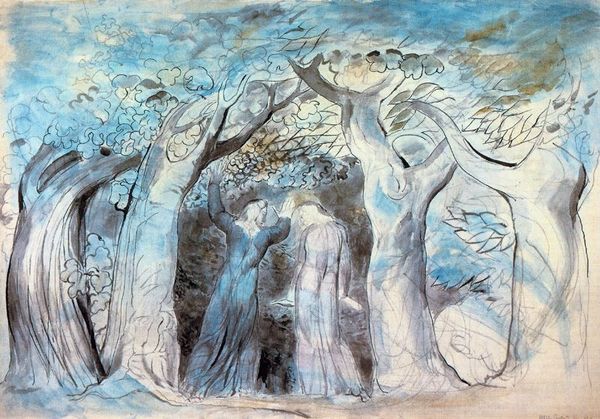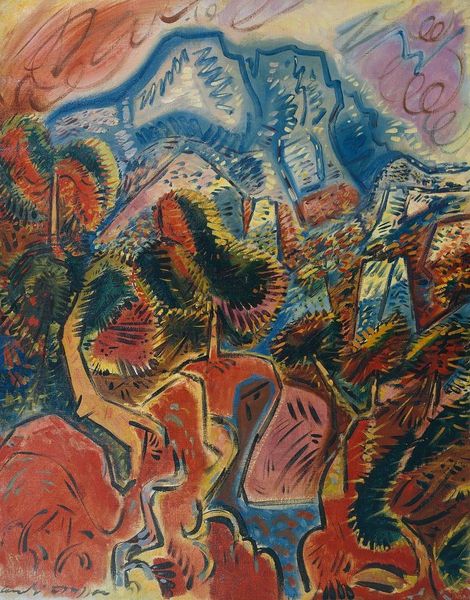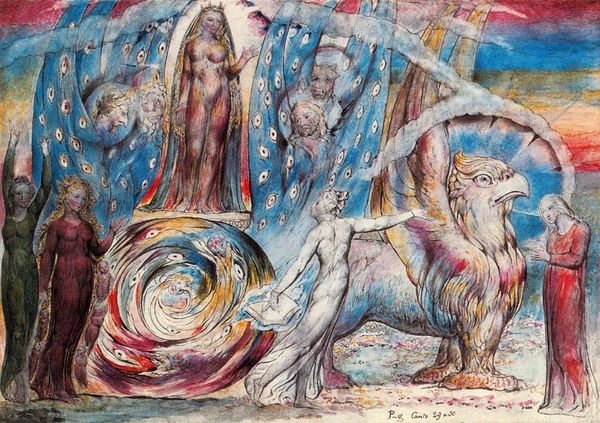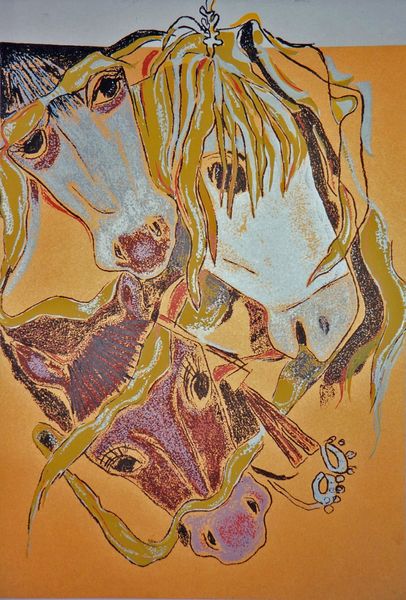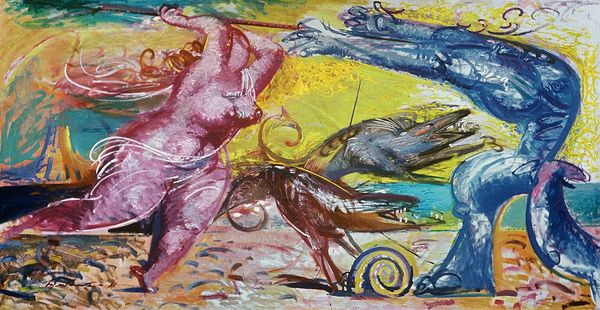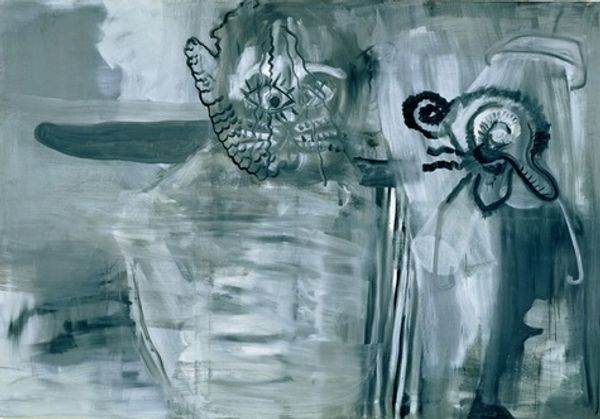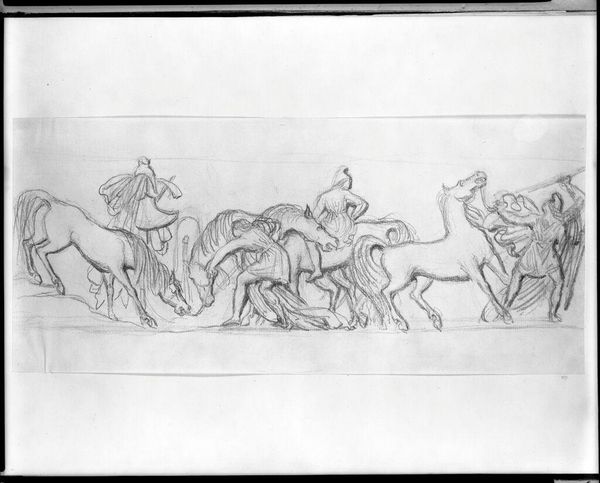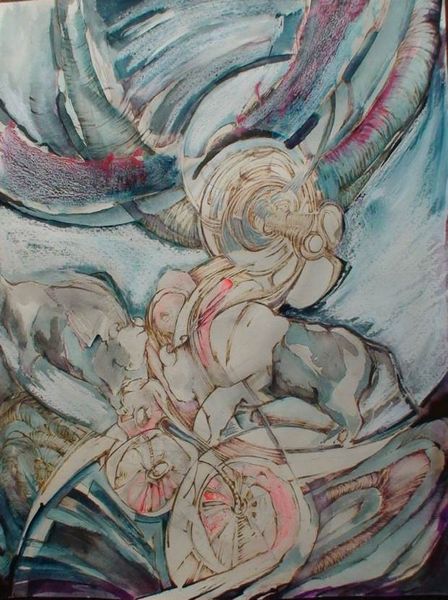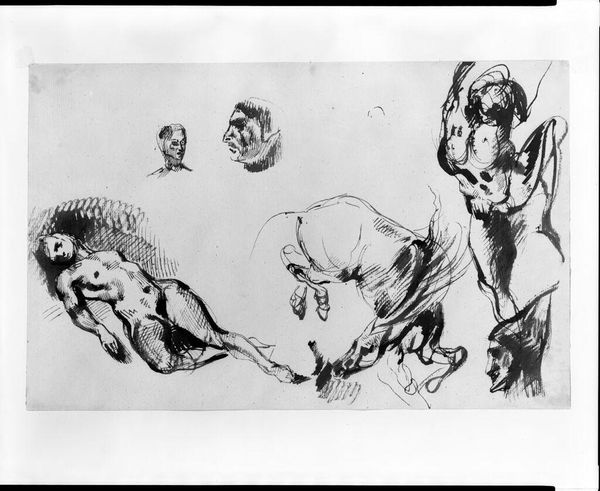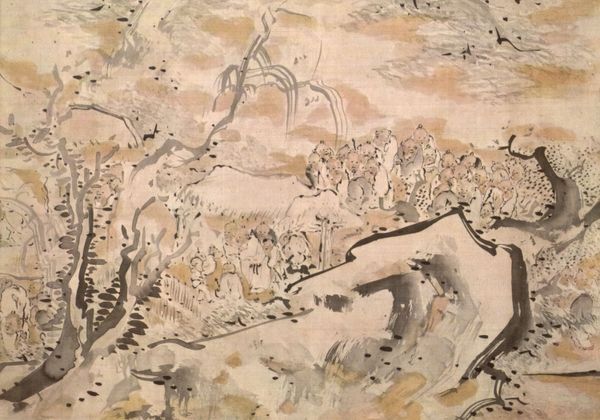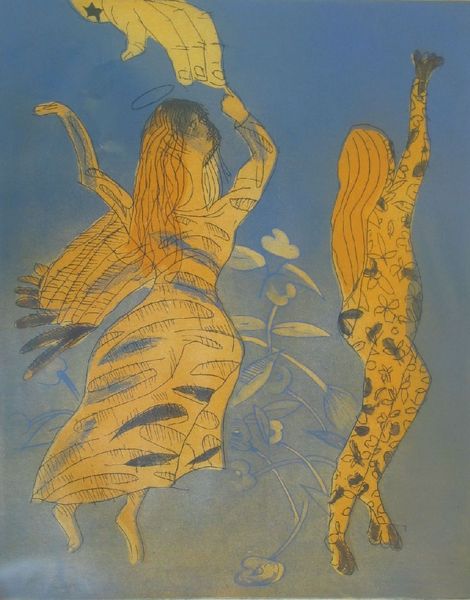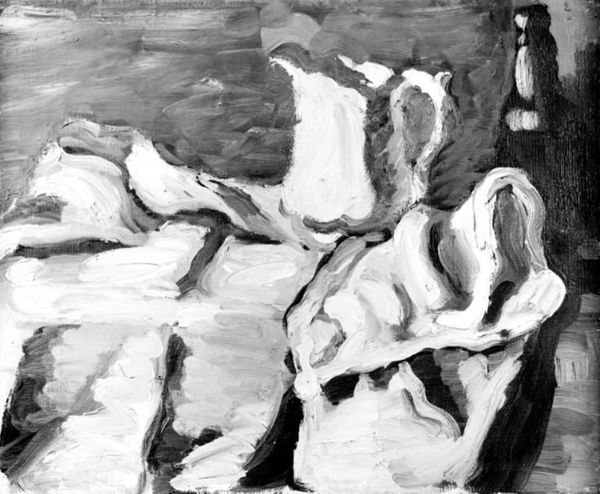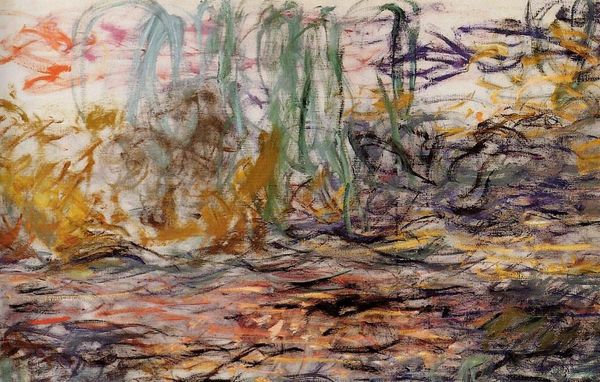
Dimensions: 44.2 x 54.4 cm
Copyright: Pablo Picasso,Fair Use
Editor: We're looking at Picasso's "Faun, horse and bird," a watercolor from 1936. It has a somber feel, almost dreamlike. The lines are fluid, but the figures seem trapped somehow. What do you see in this piece? Curator: I see a confluence of potent symbols, steeped in the cultural anxieties of the interwar period. The faun, traditionally a symbol of untamed nature and raw instinct, appears subdued, almost melancholic. Consider its placement alongside the horse - an archetypal symbol of power, here seemingly stylized and even skeletal. How does this juxtaposition speak to you? Editor: It's like a breakdown of traditional power structures? The faun’s sadness, the horse’s… artificiality? Curator: Precisely! And don’t forget the bird. Across cultures, birds often represent freedom, the soul, or even premonitions. But this bird, nestled between the faun and the horse, feels vulnerable, almost sacrificed. Notice too how Picasso employs cubist techniques—fragmentation— to underscore the instability. Do you think Picasso intended to evoke a specific narrative? Editor: Possibly, but the symbols feel more universal than that. The anxiety, the loss of innocence, the fragility of freedom… I see it all. Curator: Indeed. The enduring power of symbols lies in their ability to resonate across time and personal experience. What's compelling is the way Picasso makes those age-old motifs feel startlingly new. Editor: I never really thought about Picasso using symbols like this before; I'll definitely keep that in mind going forward. Thanks!
Comments
No comments
Be the first to comment and join the conversation on the ultimate creative platform.
